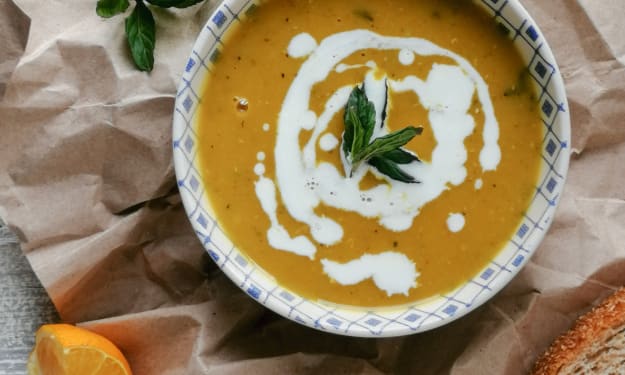The Unique Appeal of Blackened Chicken Tenders: A Culinary Delight
Blackened Elegance: Elevating Casual Dining with a Gourmet Twist

CLICK HERE TO WATCH THE VIDEO RECIPES
Introduction
In the realm of culinary exploration, where taste and presentation intertwine to create memorable dining experiences, blackened chicken tenders have emerged as a fascinating and delectable choice. These charred yet succulent pieces of poultry offer a tantalizing twist on the traditional chicken tender, enticing the senses with their rich flavor, striking appearance, and a history deeply rooted in regional American cuisine. In this article, we delve into the origins, preparation methods, and the unique appeal of blackened chicken tenders.
The Origin and Evolution
Blackened chicken, often associated with Cajun cuisine, has its roots in the southern United States, particularly in the state of Louisiana. The technique of "blackening" involves coating the meat, usually fish or poultry, with a blend of spices and then searing it in a hot skillet. The method gained popularity in the 1980s, largely thanks to the culinary genius of Chef Paul Prudhomme, who is credited with introducing blackened redfish to the world.
The Art of Blackening
The process of creating blackened chicken tenders involves a careful balance of spices, heat, and timing. The primary spice blend typically includes ingredients such as paprika, cayenne pepper, thyme, oregano, garlic powder, onion powder, and black pepper. This flavorful medley is rubbed onto the chicken tenders, creating a bold and aromatic seasoning.
The secret to achieving the signature "blackened" appearance lies in the searing process. A cast-iron skillet is preheated until smoking hot, then the seasoned chicken tenders are added. The high heat causes the spices to toast and form a crust on the outside of the meat, creating the iconic blackened appearance. This quick cooking method not only locks in the juices but also imparts a smoky depth to the dish.
The Culinary Appeal
Flavor Explosion: Blackened chicken tenders are a symphony of flavors. The spices infuse the meat with a harmonious blend of smokiness, heat, and earthiness, creating a taste that's both bold and balanced.
Textural Contrast: The contrast between the crispy, blackened exterior and the tender, juicy interior of the chicken tenders offers a delightful textural experience that keeps diners coming back for more.
Visual Allure: The striking appearance of blackened chicken tenders can't be ignored. The dark, charred crust is visually appealing and immediately signals that this dish is something out of the ordinary.
Versatility: While traditionally served as an entrée, blackened chicken tenders can also be incorporated into salads, wraps, sandwiches, and more. Their robust flavor profile complements a wide range of accompanying ingredients.
Health Considerations and Variations
While the appeal of blackened chicken tenders is undeniable, it's worth considering some health aspects as well. The intense heat used in the blackening process can create charred portions that might contain compounds known as heterocyclic amines (HCAs) and polycyclic aromatic hydrocarbons (PAHs). These compounds can form when meat is cooked at high temperatures and has been linked to potential health risks, including cancer. To mitigate this, some chefs recommend marinating the chicken in acidic ingredients like lemon juice or vinegar before blackening, as this can reduce the formation of these compounds.
Additionally, for those watching their sodium intake, it's important to be aware that many spice blends used for blackening can be quite salty. Opting for homemade spice mixes or using lower-sodium alternatives can help strike a healthier balance without compromising on flavor.
Creative Twists on Blackened Chicken Tenders
While the traditional blackening method is a culinary gem in its own right, chefs and home cooks have found innovative ways to put their own spin on this classic dish:
Mango Salsa Fusion: Pairing the heat of blackened chicken tenders with the refreshing sweetness of mango salsa creates a delightful contrast that tantalizes the taste buds.
Greek Yogurt Dip: A creamy Greek yogurt dip infused with herbs and a touch of citrus can complement the spiciness of blackened chicken tenders, offering a cooling and tangy accompaniment.
Asian Influence: Infuse blackened chicken tenders with Asian flavors by using a blend of spices like ginger, garlic, and soy sauce. Serve with a side of sesame coleslaw for a fusion experience.
Vegetarian/Vegan Options: The blackening technique can also be applied to plant-based proteins like tofu or tempeh, opening up the door to a whole new realm of possibilities for those following vegetarian or vegan diets.
Pairing and Presentation
Pairing blackened chicken tenders with the right sides and beverages can elevate the overall dining experience. Crispy sweet potato fries, buttery cornbread, or a refreshing cucumber and tomato salad are all excellent choices. As for beverages, a crisp and citrusy white wine, a light beer, or a fruity iced tea can complement the bold flavors of the dish.
In terms of presentation, arranging the blackened chicken tenders atop a bed of colorful vegetables or on a rustic wooden platter can enhance the visual appeal. A drizzle of herb-infused oil or a sprinkle of fresh chopped herbs over the dish can add a touch of elegance.
Health Considerations and Variations
While the appeal of blackened chicken tenders is undeniable, it's worth considering some health aspects as well. The intense heat used in the blackening process can create charred portions that might contain compounds known as heterocyclic amines (HCAs) and polycyclic aromatic hydrocarbons (PAHs). These compounds can form when meat is cooked at high temperatures and has been linked to potential health risks, including cancer. To mitigate this, some chefs recommend marinating the chicken in acidic ingredients like lemon juice or vinegar before blackening, as this can reduce the formation of these compounds.
Additionally, for those watching their sodium intake, it's important to be aware that many spice blends used for blackening can be quite salty. Opting for homemade spice mixes or using lower-sodium alternatives can help strike a healthier balance without compromising on flavor.
Creative Twists on Blackened Chicken Tenders
While the traditional blackening method is a culinary gem in its own right, chefs and home cooks have found innovative ways to put their own spin on this classic dish:
Mango Salsa Fusion: Pairing the heat of blackened chicken tenders with the refreshing sweetness of mango salsa creates a delightful contrast that tantalizes the taste buds.
Greek Yogurt Dip: A creamy Greek yogurt dip infused with herbs and a touch of citrus can complement the spiciness of blackened chicken tenders, offering a cooling and tangy accompaniment.
Asian Influence: Infuse blackened chicken tenders with Asian flavors by using a blend of spices like ginger, garlic, and soy sauce. Serve with a side of sesame coleslaw for a fusion experience.
Vegetarian/Vegan Options: The blackening technique can also be applied to plant-based proteins like tofu or tempeh, opening up the door to a whole new realm of possibilities for those following vegetarian or vegan diets.
Pairing and Presentation
Pairing blackened chicken tenders with the right sides and beverages can elevate the overall dining experience. Crispy sweet potato fries, buttery cornbread, or a refreshing cucumber and tomato salad are all excellent choices. As for beverages, a crisp and citrusy white wine, a light beer, or a fruity iced tea can complement the bold flavors of the dish.
In terms of presentation, arranging the blackened chicken tenders atop a bed of colorful vegetables or on a rustic wooden platter can enhance the visual appeal. A drizzle of herb-infused oil or a sprinkle of fresh chopped herbs over the dish can add a touch of elegance.
Conclusion
Blackened chicken tenders are a canvas of culinary creativity, offering a versatile foundation that can be adapted to a variety of tastes and dietary preferences. Beyond their flavor and visual appeal, these tenders embody a rich history of southern cuisine and the art of cooking with fire. As you venture into the world of blackened chicken tenders, don't hesitate to experiment with flavors, sides, and presentations that reflect your personal culinary style. Whether you're a seasoned chef or an eager home cook, the allure of blackened chicken tenders is a journey worth savoring—one bite at a time.
Exploring Regional Influences and Global Adaptations
While blackened chicken tenders have a strong association with Cajun cuisine, their popularity has transcended regional boundaries. Chefs and food enthusiasts around the world have embraced this technique and added their own unique twists to create global adaptations:
Mediterranean Marvel: Infuse the flavors of the Mediterranean by using a blend of rosemary, thyme, and lemon zest as the seasoning. Serve the blackened chicken tenders on a bed of couscous and roasted vegetables for a Mediterranean-inspired delight.
Indian Fusion: Incorporate the vibrant spices of India, such as cumin, coriander, and turmeric, into the seasoning mix. Pair the blackened chicken tenders with a cooling raita dip and aromatic saffron rice.
Caribbean Vibes: Create a tropical paradise on your plate by using jerk seasoning for a Caribbean flair. Serve the tenders with a side of grilled pineapple salsa and coconut rice.
East Asian Fusion: Introduce an umami-rich twist with flavors like soy sauce, sesame oil, and ginger. Present the blackened chicken tenders alongside a colorful stir-fry of crisp vegetables and noodles.
Home Cooking Adventures
Bringing the magic of blackened chicken tenders into your own kitchen can be an exciting and rewarding experience. Here's a basic recipe to get you started:
Ingredients:
Chicken tenders (about 1 pound)
2 tablespoons paprika
1 teaspoon cayenne pepper (adjust for heat preference)
1 teaspoon dried thyme
1 teaspoon dried oregano
1 teaspoon garlic powder
1 teaspoon onion powder
1 teaspoon black pepper
1/2 teaspoon salt (adjust to taste)
Olive oil (for brushing)
Lemon wedges (for serving)
Instructions:
In a bowl, mix together all the spices to create the blackening seasoning.
Pat the chicken tenders dry with paper towels and coat them generously with the spice mix.
Preheat a cast-iron skillet over high heat until it's smoking hot.
Brush the chicken tenders with olive oil and carefully place them in the skillet. Cook for about 2-3 minutes on each side, or until fully cooked and nicely blackened.
Remove from heat and let them rest for a minute before serving.
Squeeze fresh lemon juice over the tenders before serving for a burst of citrusy flavor.
Final Thoughts
Blackened chicken tenders have transformed from a regional specialty to a global sensation, showcasing the boundless possibilities of culinary creativity. As you embark on your journey of savoring and preparing these flavorful delights, remember that the heart of the experience lies in the balance between tradition and innovation. So, whether you're enjoying them with a Cajun twist or experimenting with international influences, each bite of blackened chicken tenders is a tribute to the ever-evolving world of gastr
Conclusion
Blackened chicken tenders are more than just a dish; they represent a culinary journey through time and flavors. From their humble beginnings in Louisiana to their current status as a beloved choice on restaurant menus worldwide, these tenders offer a unique fusion of taste, technique, and visual allure. Whether you're an adventurous foodie or simply someone seeking a palate-pleasing experience, indulging in the world of blackened chicken tenders is a decision you won't regret. So, the next time you're in the mood for a culinary adventure, consider embarking on a flavor-packed excursion with a plate of perfectly blackened chicken tenders.
Blackened Elegance: Elevating Casual Dining with a Gourmet Twist for to watch the video click here
or
CLICK HERE TO WATCH THE VIDEO RECIPES
About the Creator
Ketolife weightloss
https://heylink.me/glossary/






Comments
There are no comments for this story
Be the first to respond and start the conversation.